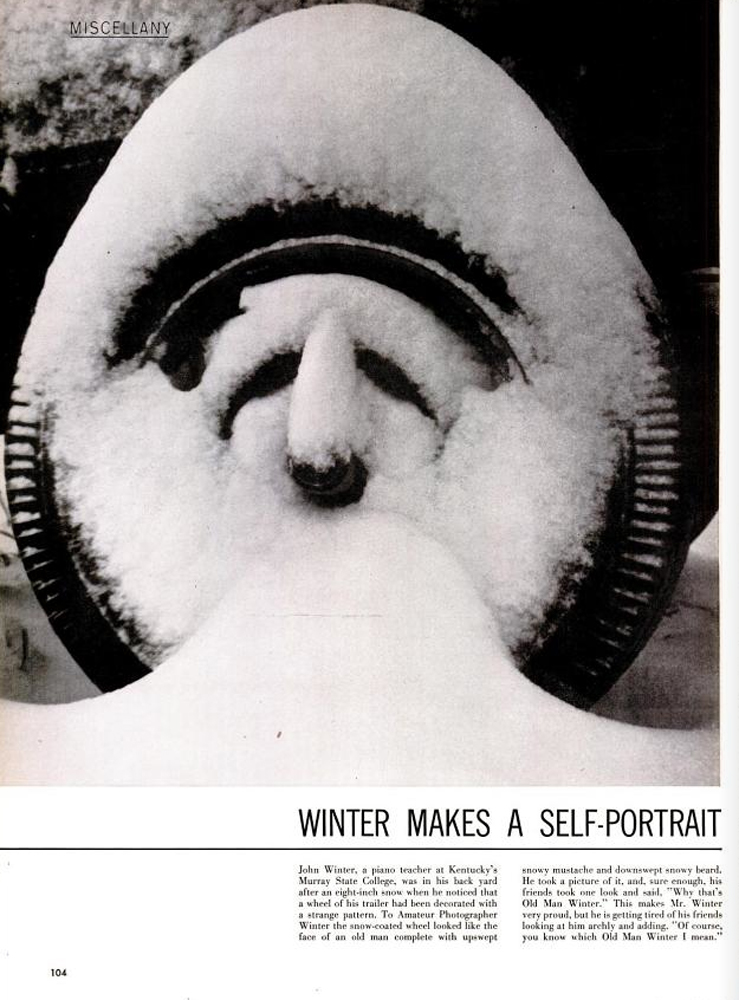
At one time or another, most everyone has engaged in pareidolia — even if we had no idea that there was a word for it. In essence, pareidolia is the psychological phenomenon that allows humans to find significance or recognizable symbols in random scenes and stimuli. The constellations soaring in the heavens; the Virgin Mary “seen” in a water stain; a face on the surface of Mars — these and countless other examples testify to the human desire (perhaps the need?) to impose familiarity and order on an irrational universe.
Take the picture above. A viewer could be forgiven for, at first glance, mistaking it for a portrait of that ancient character himself, Old Man Winter — even if, in this case, the Old Man has chosen to reveal himself in the form of a sad-looking, snow-blanketed trailer wheel, rather than the mighty, weather-controlling, neo-pagan titan of myth.
The picture was made by an amateur photographer in Kentucky named John Winter (that’s right — his name was Winter) in 1953. It appeared on LIFE’s Miscellany page — a popular, long-running feature that debuted in 1952 and continued in the magazine for decades.

More Must-Reads from TIME
- Cybersecurity Experts Are Sounding the Alarm on DOGE
- Meet the 2025 Women of the Year
- The Harsh Truth About Disability Inclusion
- Why Do More Young Adults Have Cancer?
- Colman Domingo Leads With Radical Love
- How to Get Better at Doing Things Alone
- Michelle Zauner Stares Down the Darkness
Contact us at letters@time.com